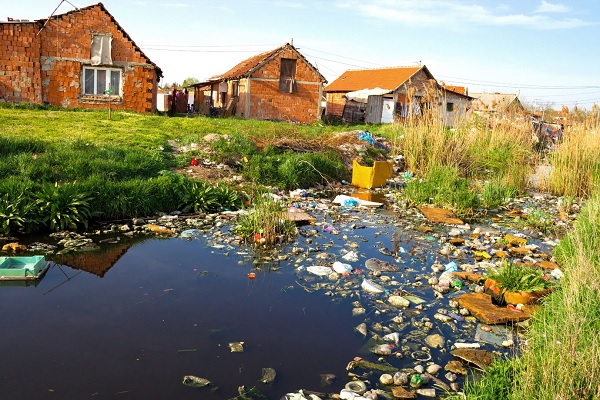
- Environmental Studies - Home
- Environment
- Ecosystem
- Classification of Ecosystem
- Functions Of Ecosystem
- Ecological Pyramid
- Energy Flow in Ecosystem
- Natural Resources
- Water Resources
- Mineral Resources
- Land Resources
- Energy Resources
- Biodiversity
- Biodiversity Hotspots
- Threats to Biodiversity
- Conversation of Biodiversity
- Pollution & Control
- Air Pollution
- Water Pollution
- Noise Pollution
- Soil Pollution
- Solid Waste Management
- Hazardous Waste Management
- Water Waste Management
- Global Environmental Problems
- Ozone Depletion
- Deforestation & Desertification
- International Protocols
- Policy & Legislation
- Air,Water & Forest Acts
- Environmental Impact Assessment
- Towards Sustainable Future
Environmental Studies - Pollution and Control
Environmental pollution or simply pollution refers to undesirable changes occurring in the physical, chemical, and biological composition of natural environment consisting of air, water, and soil. Pollution also means the presence of harmful pollutants in an environment that makes this environment unhealthy to live in.
According to National Academy of Science, USA (1966), pollution is defined as, An undesirable change in physical, chemical, and biological characteristics of water, air, and soil that may harmfully affect human, animal, and plant life, industrial progress, living conditions and cultural assets.
Pollution is also viewed as an unfavorable alteration in the sustaining and carrying capacity of the natural environment wholly or largely by the byproducts of human activities. Natural environment has an inbuilt capacity to replenish the losses or reduction in its constituents to restore it as sustainable and healthy as required.
Ever expanding population and evolution of man into modern homo sapiens have led to rapid urbanization, industrialization and unprecedented rise in human habitations. All these human endeavors have, in turn, virtually perpetuated deforestation, loss of habitats for flora and fauna, depletion of natural resources at a large scale over the last couple of centuries, which have told upon the inherent resilience of the natural environment. As a result, natural environment continues to be undesirably polluted.
Pollutants
A pollutant is defined as any form of energy or matter or action that causes imbalance or disequilibrium in the required composition of natural objects such as air, water, etc. A pollutant creates damage by interfering directly or indirectly with the biogeochemical process of an organism.

Pollutants may be −
Natural Pollutants − Natural pollutants are caused by natural forces such as volcanic eruption and forest fire.
Man-made Pollutants − These refer to the release of excess amount of gases or matter by human activities. For instance, increase in the number of automobiles adds excess carbon monoxide to the atmosphere causing harmful effect on vegetation and human health.
Classification of Pollution
Different types of pollution are classified based on the part of the environment which they affect or result caused by a particular pollution. Each type of pollution has its own distinctive cause and consequences.
The major types of pollution are as follows.
- Air pollution
- Water pollution
- Noise pollution
- Soil or land pollution